Buy or gift a stand-alone digital subscription and get unlimited access to dozens of back issues for just £18.99 / $18.99 a year.
Please register at www.exacteditions.com/digital/cornucopia with your subscriber account number or contact subscriptions@cornucopia.net
Buy a digital subscription Go to the Digital EditionTurkey’s greatest classical sight can come as a shock, even to a die-hard art historian (writes Roger Williams). It was the start of an eye-opening journey for Brian Sewell, recorded in South from Ephesus, a book that ‘already qualifies as a classic’, according to Maureen Freely who reviewed it in Cornucopia 27. ‘He thought there would not be much to see there. He assumed that anything he did find would have no relevance to what he knew about art and architecture…He soon found out how wrong he was. South from Ephesus is a book-length mea culpa.’ (Sewell’s book has been republished in 2012, and is reassessed by Rupert Scott in Cornucopia 48).
Ephesus, capital of the Roman province of Asia Minor, never fails to surprise. A wealthy trading port dating from around 1000 BC, it was famous for its cult of Artemis (Anatolian Cybele, Roman Diana), the curiously apendaged goddess whose temple, the Artemesium (on the outskirts of Selçuk), was one of the Wonders of the Ancient World. The site is extensive and there is little left of what was a spectacular port, now high and dry, though there is still a sense of the epic grandeur that must have brought gasps from awed early visitors. The façade of the grand library forms a theatrical backdrop to the colonnaded steets worn with wheel ruts, and to the shops and domestic buildings with their murals and graffiti, all giving an insight into what life was like at its height. And nowhere is the intimacy of its domestic life better explained than in Thomas Roueché’s feature, ‘At Home with The Ephesians’ in Cornucopia 43, with photographs by Jean Marie del Moral.
The site’s layers peel back through Byzantine walls and the first Christian church dedicated to the Virgin Mary, to Roman baths and Hellenistic fortifications. The 25,000-seat theatre has peerless accoustics and is the perfect setting for a classical concert.
Ephesus has always been known as home to one of the Seven Wonders of the World, and the first archaeological missions to the city concentrated on the search for the remains of the Temple of Artemis. For Ephesus at its zenith, between the first and third centuries, was the major port in Asia Minor and gateway to the eastern provinces of the Roman Empire. Its wealth in this period is evident in the grand monuments visible today. The façade of the Library of Celsus displays the flashy opulence of privately funded public spaces, and the massive theatre is still used for musical and theatrical performances. Yet the city’s wealth extends beyond great public buildings to the quotidian details of private lives. The Terrace Houses, situated at its very centre, offer a glimpse into the everyday life of the city’s elite, those responsible for its cosmopolitan beauty.
The identity of Ephesus was profoundly eastern. Antony and Cleopatra made it their capital during the Roman civil wars, and Plutarch tells us of Antony’s entrance into the city: “Women arrayed like Bacchus, and men and boys like satyrs and Pans, led the way before him, and the city was full of ivy and thyrsus wands and harps and pipes and flutes and the people hailing him as Dionysus, the giver of joy and beneficence.” Ephesus was one of the foremost ports in Asia Minor, and prominent Romans travelling east to take up governorships or administrative posts generally passed through; Pliny the Younger and Cicero both write in detail of their visits. From the end of the third century, however, the city began to lose its prominence as earthquakes brought down the great monuments and the harbour gradually silted up.
Excavation of the Terrace Houses by Austrian archaeologists took place between 1967 and 1983, and in 1999 the magnificent remains of the so-called “Terrace House Two” were covered with a large white roof structure for protection.
The Terrace Houses were so called because they were built into the hill on terraced ground, a form of building also known as Hanghaus, or slope house. Because Terrace House One escaped the earthquake of ad262 and continued to be lived in until the end of the seventh century, it lost its original Roman decoration to continued repainting. Terrace House Two was in a sense more fortunate because it was ruined in the earthquake.
Like the others, it was a Roman insula, or apartment block, comprising six apartments of three storeys each, constructed towards the end of the first century – a most sophisticated form of urban living. When the towering three-storey building collapsed, the delicate interiors of the lower floors were preserved under the heaps of rubble that landed from above.
This chronology has only recently been acknowledged. Earlier archaeologists assumed that both Terrace House One and Two were inhabited until the city was deserted in the seventh century. Thanks to recent excavations, this has been revised. While Terrace House One was indeed inhabited until the seventh century, datable fragments found in the rubble show that Terrace House Two was abandoned much earlier, at the end of the third century AD. House Two’s frescoes, still in the process of restoration, are truly magnificent examples of the high period of Roman art, second only to those of Pompeii, although they generally differ in style and subject matter. Most of the frescoes are intellectual in inspiration, depicting philosophers and muses, whereas in Pompeii pastoral scenes are more common.
Most magnificent of all are those in the Room of the Muses, the first to undergo restoration. The white walls are divided into a series of panels, each displaying the figure of a muse. The fact that there are two similar rooms in neighbouring apartments proves the popularity of such designs. The Theatre Room displays another set of spectacular wall paintings. This time we see four large figures of actors, and above them Hercules with the river god Acheloos. Round the walls are small scenes from the tragedies of Aeschylus and the comedies of Menander. A magnificent pastoral scene in the peristyle, or courtyard, of Apartment Four lends an illusion of space. This room is similar to examples at Pompeii. In the other apartments the natural world is depicted in a more abstract style, within larger and more complex patterns of cupids, animals and masks. Frescoes such as these, as well as the apartments’ grandiose architecture, were obviously intended to reflect the owner’s wealth, urbanity and intellectual standing.
The fine glass mosaic in Apartment Two depicts Dionysus and Ariadne, and elsewhere black-and-white patterns again conform to contemporary fashions. Number Six is the most magnificent of all the apartments, featuring a bath, a library and two enormous reception rooms. The first, a triclinium, or dining room, is known as the Marble Hall, as its walls were once tiled in sumptuous marble. This was interior design with a single aim: to convey the status of its owner. Next to it stands the basilica privata, another enormous room, whose function is less clear. Crowned by an enormous dome, it featured a heated floor and a large pool. Though conventional wisdom had it that this was where the owner received clients and carried out his business, more recently this has been questioned.
Apartment Six is notable for its many references to the god Dionysus. In the peristyle two busts of the god once stood either side of a bust of the owner. And in a small room off the basilica privata is a fantastic example of stucco work featuring figures from the Dionysiac pantheon. These references have led some to believe that the apartment, and particularly the basilica privata, was the setting for rites of the cult of Dionysus. Once again, sumptuous decor and ostentatious architecture emphasise the wealth of the owner. At the expense of neighbouring flats, the marble hall had been increased in size and the basilica privata completely remodelled.
Remarkably, we know the name of the owner of Apartment Six. Gaius Flavius Furius Aptus was a leading citizen of Ephesus and at one time led the Ephesian Olympic Games as Alytarch. The bases of two statues of the goddess Aphrodite – often linked to the sea – have given rise to the theory that he made his fortune in shipping. Aptus’s home was a vital means to display his power. sophistication and status. In the morning he would conduct business and meet clients, while in the evening prominent Ephesians would be received and entertained.
In Apartment Two a graffito has been found that refers to a certain Salutaris. This could be Caius Vibius Salutaris. A prominent Ephesian noted for his civic benefaction, he also dedicated silver and gold statues to be carried through the grand processional ways of the city. On his arrival in Ephesus from Italy, he rapidly became an influential member of the city’s elite, who saw urban development as a means of social advancement.
Around the same time, at the beginning of the second century, Tiberius Julius Celsus Polemaenus, proconsul of Asia, founded his Library of Celsus, a building that advertised his cultural prowess in his lifetime and served as his tomb after his death. These three men, living within a century of each other, illustrate how the Ephesian elite established their status.
The apartments of House Two must be seen as monuments in themselves. They were as vital to the self-promotion of a Roman aristocrat as any great public benefaction. Of course the frescoes and marble revetment would have been seen only by the favoured few – a tiny fraction of the crowds impressed by great processions and grand public edifices. But what Terrace House Two’s admiring visitors lacked in numbers they would have more than made up for in exclusivity and influence. The wealth evidenced in these apartments is far more than merely an ancient “keeping up with the Joneses”.
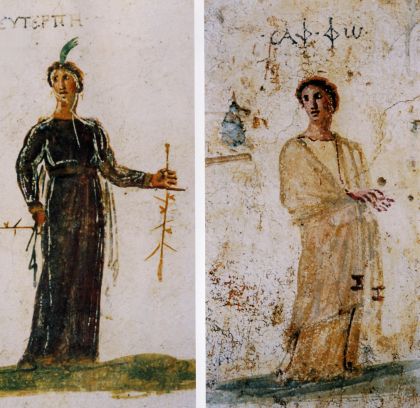
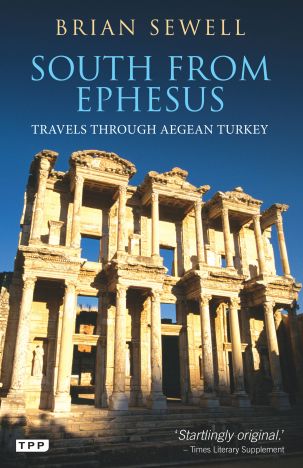
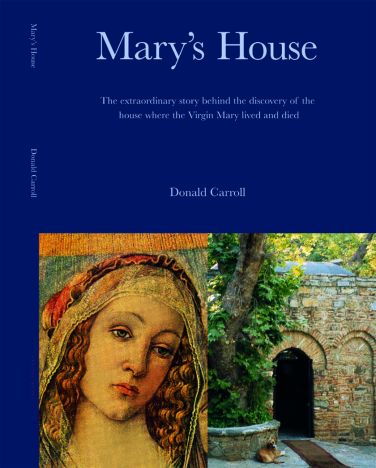
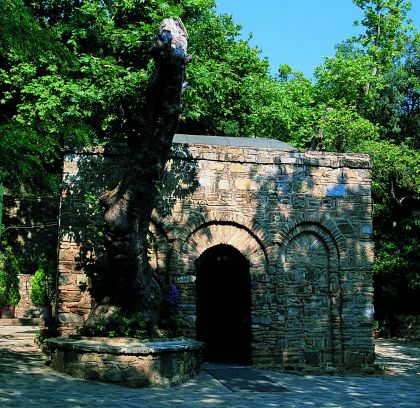
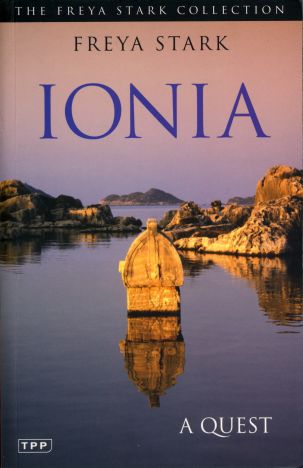

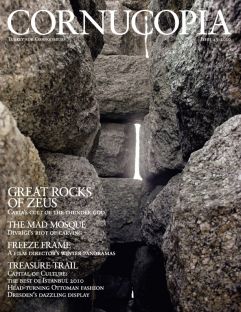
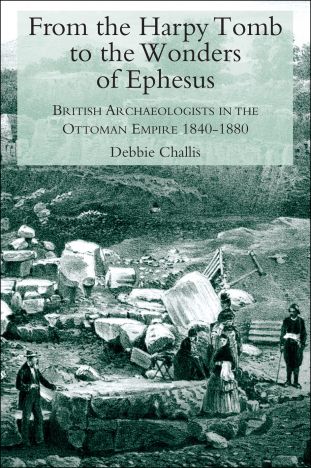
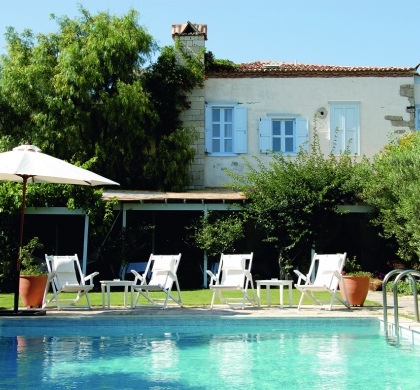
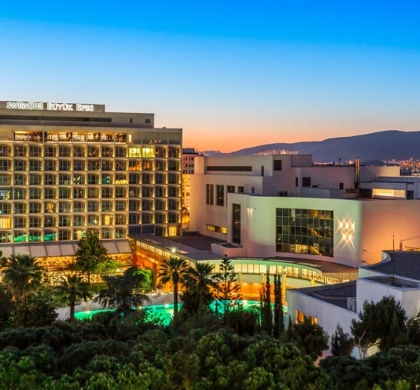
 Issue 66, December 2023
Turkey’s Centenary Issue
Issue 66, December 2023
Turkey’s Centenary Issue

Cornucopia works in partnership with the digital publishing platform Exact Editions to offer individual and institutional subscribers unlimited access to a searchable archive of fascinating back issues and every newly published issue. The digital edition of Cornucopia is available cross-platform on web, iOS and Android and offers a comprehensive search function, allowing the title’s cultural content to be delved into at the touch of a button.
Digital Subscription: £18.99 / $18.99 (1 year)
Subscribe now